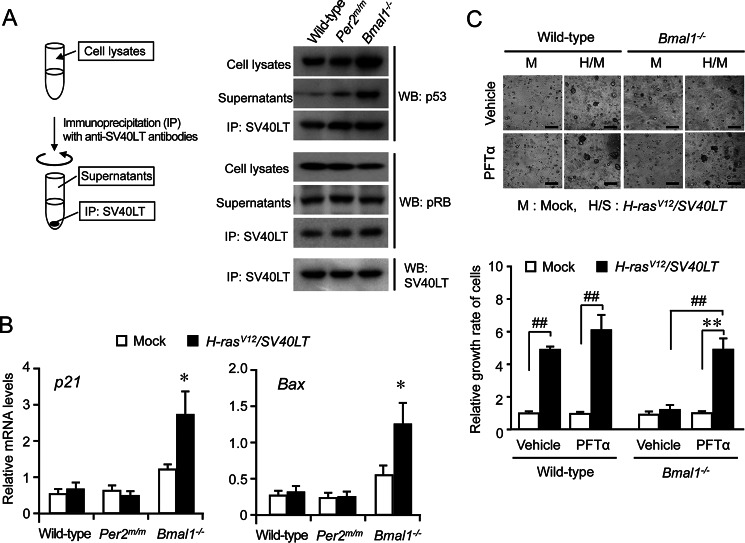FIGURE 3.
The overexpression of p53 in oncogene-introduced Bmal1−/− cells overrides the binding capacity of SV40LT. A, the oncogene-introduced wild-type, Per2m/m, or Bmal1−/− cells were lysed and were then subjected to immunoprecipitation with anti-SV40LT antibodies. The amounts of p53, pRb, and SV40LT in cell lysates, supernatants, and immune complexes were detected by Western blotting (WB). B, the mRNA levels of p53 target genes, p21 and Bax, in wild-type, Per2m/m, or Bmal1−/− cells infected with oncogenes. Values are the means ± S.E. (n = 3). *, p < 0.05 significantly different from other oncogene-introduced cells. C, influence of p53 inhibitor Pifithrin-α (PFTα) on the anchorage-independent growth of wild-type and Bmal1−/− cells after the concomitant introduction of H-rasV12 and SV40LT. Cells infected with oncogenes were subjected to a soft agar colony assay in the presence or absence of 30 μm pifithrin-α. The colony formation of cells and their viability were assessed 14 days after seeding. Control cells were infected with mock vectors. The upper panels show representative microscopic photographs of colony formation in each type of cells. The scale bars indicate 100 μm. The lower panel shows viability of cells. Values are shown as the means ± S.E. (n = 4). Mean values of mock-transfected wild-type cells were set at 1.0. ##, p < 0.01; **, p < 0.01 significantly different between the two groups.

